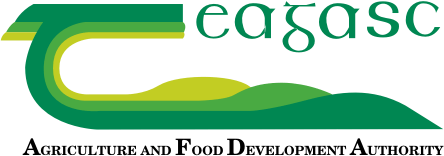05 August 2020
Impact of COVID-19 on farm incomes in 2020 now likely to be more limited

At present, fears of a sharp COVID-19 related drop in Irish farm incomes in 2020, seem to have been averted following a gradual recovery in commodity prices and the provision of additional supports to the sector, according to Mid Year Outlook for 2020 produced by Teagasc economists.
Like other sectors of the economy in 2020, the Irish agri-food sector has been grappling with the impact of COVID-19. Farmers are relatively powerless in the face of market disruption and as the extent of COVID-19 emerged in the spring of 2020, it appeared that the impact on the agricultural incomes could be quite severe.
Given the challenges presented to the sector by the virus, assistance for the beef sector has come through additional government supports and in the dairy sector via price stabilising payments from milk processors.
Fears about the extent of commodity price reductions have abated in recent weeks, with a recovery in dairy and beef prices taking place more quickly than had been anticipated. There has been a more rapid emergence from the strict lockdown in Europe, though the risk of a resurgence of the virus and possible return to restrictions on economic activity in Europe remains. Were a second wave of the virus to occur, then commodity prices could again come under pressure.
For pasture based systems, a protracted period of dry weather through May and into June, had an adverse impact on grass growth in many areas in Ireland. Soil moisture deficits were widespread, but were eventually addressed through higher rainfall levels over the summer.
On a positive note, relative to 2019 input prices movements have been favourable from a farmer perspective in 2020. Feed, fertiliser and energy are all cheaper than was the case in 2019.
For dairy, cattle and sheep farms, input usage should be relatively normal in 2020 and costs are likely to fall slightly due to lower input prices. For tillage farmers, input usage is likely to be down due to the large decrease in winter cereal plantings and an increase in spring plantings, with a demand for lower input usage. Hence, tillage farmers will benefit from volume and price reductions on the input side.
The dairy cow population has continued to increase in 2020, and a further increase in Irish milk production of about 3 to 4 percent is likely if normal weather persists through the rest of the season.
While cattle prices have staged a recovery, 2020 will remain a challenging year and the additional support provided to the sector via announced pandemic support payments will provide support to cattle incomes.
Sheep prices in 2020 have been stronger than in 2019, with prices forecast to be more than 5% higher than in 2019. Lower UK exports to key continental EU markets, reduced imports from New Zealand and a contraction in EU production combined to leave EU and Irish prices higher despite the disruption to demand caused by COVID-19. With lower direct costs of production on Irish sheep farms due to lower feed, fertiliser and energy prices, margins and incomes for Irish sheep farmers are forecast to grow strongly in 2020.
For cereals, adverse winter weather meant that there has been an increase in the area allocated to, typically lower yielding, spring crops in 2020. Due to adverse weather at a critical stage in plant development, expectations are that yields for cereals in 2020 will be down on those achieved in 2019.
Given international supply and demand dynamics, cereal prices are expected to increase slightly at harvest 2020 for wheat, but very little change in feed barley price is expected. Forward contract prices on offer at present will not be sufficient to offset the significant reduction in cereal volumes that are expected this harvest. While straw prices are expected to increase in 2020, much reduced straw volumes will also likely result in a decrease in straw output value on tillage farms.
Whilst there will be some relief from lower input expenditure and slightly higher wheat prices in 2020, these factors will be insufficient to balance out the projected volume decline in cereals. A large drop in cereal margins and incomes in 2020 is expected, with the average tillage farmer struggling to make an income of €30,000.
While a portion of the peak milk delivery season remains, if weather conditions remain favourable and milk prices hold, then the average income on dairy farms in 2020 could be close to the €67,000 achieved in 2019.
The additional COVID-19 related support to be provided to cattle farmers should offset some of the negative impact on farm incomes of lower cattle prices. The average income on Cattle Rearing farms is forecast to increase by 5% (€9,700) in 2020, while incomes on Cattle Other farms are forecast to contract by 4% (€13,300).
Incomes on sheep farms are set to be up by over 15% in 2020, to more than €17,000, due to growth in output value, stable direct payments and lower total costs of production.
Overall, while the worst case impact of COVID-19 on the agricultural sector in Ireland would appear to have been avoided, farm incomes in 2020 are still likely to be lower than would have been anticipated at the outset of the year.
Teagasc has also released its Farm Enterprise Factsheets for 2019 based on the Teagasc National Farm Survey, which provide a detailed breakdown on the financial and technical performance of the main enterprises in Irish agriculture for 2019.
The Mid Year Outlook for 2020 can be downloaded here and the Enterprise factsheets can be downloaded here
